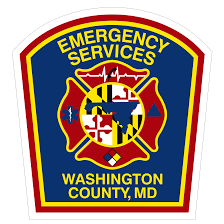Viral Syndrome Pandemic Triage Protocol
JMD Approval: JMD Martin
Date: March 20, 2020
Purpose:
The Jurisdictional Medical Director, through MIEMSS and the EMS Operational Program has authorized the use of this protocol during this pandemic outbreak. The intent of the protocol is to allow EMS to identify healthy, low risk patients and then recommend that they self-isolate at home. The decision to remain at home rests completely with the patient after discussion with the EMS providers. The protocol also provides instructions on self-care and monitoring along with action steps should the patient have any concerns. It requires a follow up telephone call or visit within 24 hours of the initial assessment by the EMS Operational Program.
Applicability:
This protocol is applicable to all personnel certified as an EMT or higher.
Definitions:
None
Procedures:
A. Following an appropriate patient assessment, clinicians will complete the attached Viral Syndrome Pandemic Triage Protocol Checklist (most current version).
B. Patients meeting the criteria for self-isolation:
a. The clinician will engage the patient in conversation about the risks vs. benefits of transport to a medical facility. The patient must decide on transport. THIS IS NOT A PROVIDER INITIATED PROTOCOL!
b. Patients requesting transport will be transported to the closest appropriate hospital-based emergency room and treated in accordance with the Maryland Medical Protocols for EMS Providers.
c. Patients electing to self-isolate at home will be provided with the “Viral Infection Home Care Instructions” provided by the EMS Operational Program. Clinicians must review the instructions item by item ensuring that the patient understands each bullet point to include what to do if they have any concerns or their
condition worsens.
d. The patient must sign the HIPAA/Authorization for Billing section of the eMEDS report. This, along with a detailed explanation in the narrative will indicate their acceptance of the home care instructions
Viral Syndrome Pandemic Triage Protocol
C. Patients not meeting the criteria for self-isolation
a. Unless the patient refuses transport, the clinician will transport the patient to the closest appropriate hospital-based emergency room and treated in accordance with the Maryland Medical Protocols for EMS Providers.
b. Patients refusing transport will be processed as a patient refusal. Clinicians are encouraged to seek medical consultation in an attempt to convince the patient to accept transport.
c. Patients that ultimately refuse transport shall be encouraged to self-monitor at home and will be given a copy of the “Viral Infection Home Care Instructions” provided by the EMS Operational Program. Clinicians must review the instructions item by item ensuring that the patient understands each bullet point to include what to do if they have any concerns or their condition worsens.
d. These patients must sign a patient refusal. This signature indicates their acceptance and understanding of the home care instructions.
D. Documentation
a. Clinicians must complete the COVID-19 section of eMEDS indicating that the protocol was utilized and then they must complete the screening tool provided in the report.
b. Documentation in the narrative must include a detailed description of the discussions had with the patient regarding the home care instructions and the patient’s understanding of those instructions.
E. Patient Follow Up
a. Follow up telephone calls will take place within 24 hours of the initial patient contact.
b. The EMS Operational Program will be responsible for assigning follow up telephone calls based on the location of the call.
i. 1811 – Stations 2, 26, 49, 59
ii. 1812 – Stations 19, 69, 79
iii. D-75 – Stations 75, 754, 759
c. The follow up must be completed by an ALS provider.
d. Follow up telephone calls will follow a standard format as determined by the Jurisdictional Medical Director and be documented on the approved follow up form.
e. Disposition will be made based on the information obtained during the telephone call. There will be four (4) disposition classifications.
i. EMS Response – During questioning it is determined that the patient requires a follow up visit by an EMS unit.
Viral Syndrome Pandemic Triage Protocol
1. This may be emergent or non-emergent and could require the response of a transport unit or supervisor. The individual
conducting the follow up telephone call will make this
determination.
2. Documentation will be completed via a new eMEDS report. 3. If patient is not transported, patient follow up will start over again.
ii. Consult with Jurisdictional Medical Director – During questioning it is determined that the patient developed a fever with vomiting but is tolerating some oral fluids and no other priority symptoms. Patient will consult with the Jurisdictional Medical Director.
1. Preferred method is via cell phone or facetime with JMD at time of the follow up telephone call.
2. Back up method is to contact the JMD and schedule a time to follow up with patient.
3. JMD is responsible for documenting disposition of the call.
iii. Repeat call required – During questioning it is determined that, in the opinion of the surveyor, the patient is not getting better but does not meet any higher category.
1. Surveyor will schedule another follow up telephone call with the patient to be conducted the next day.
2. The second call will require a separate follow up form and will either result in discharge, physician consult or EMS response.
iv. Follow up terminated – During questioning it is determined that the patient’s condition has either improved or remained unchanged.
